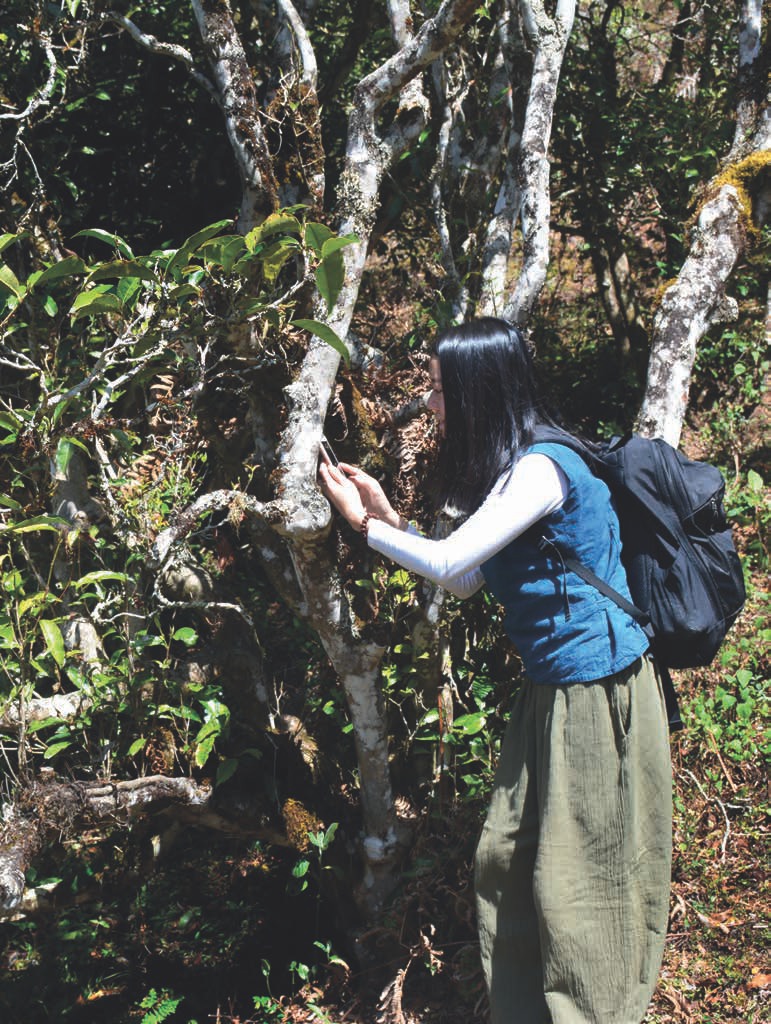
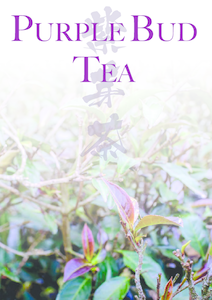 |
|
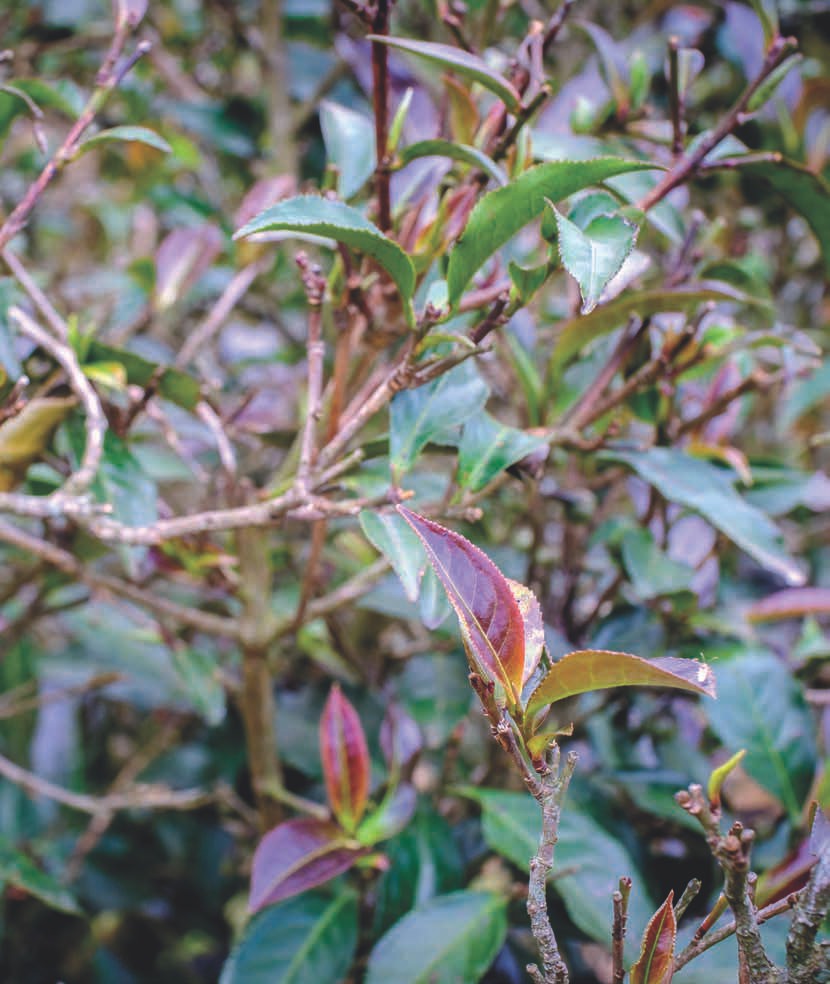
Puerh tea is a well-known variety that is unique to China's Yunnan Province, and is made from the leaves of Yunnan tea tree varietals. Most trees used for puerh have green leaves and buds, but there is another, rarer type: "Purple Bud," or "Zi Ya (紫芽)" tea. In his famous Tea Sutra, the Cha Jing (茶經), the tea sage Lu Yu (陸羽) sings its praises: "Purple tea is the finest of teas." The "purple tea" that he refers to here is Purple Bud tea from Yunnan.

While there are other types of Purple Bud tea that are not Yunnanese puerh, we will focus on the Yunnanese varietals. The purple buds and leaves in these varietals arise due to natural genetic variation when old-wood tea trees are exposed to certain environmental factors in certain areas. (There's also another phenomenon whereby a tea tree's leaves can briefly turn purple simply from exposure to temporary changes in weather and climate, but that's not what we're referring to here.) In other words, the leaves of a tree may change briefly due to exposure to direct sunlight. To protect itself from ultraviolet (UV) radiation, the tree can develop a temporary purplish-maroon hue in some of the leaves. If this continues to occur over time, generations of this tree will evolve towards more and more purplish buds through sexual cross-pollination and the resulting mutation. Eventually, the offspring of such tea will have the potential to generate purple leaves, even if they have migrated to an area that has less UV exposure. As a result, we sometimes find wild Purple Bud trees deep in the forest. (The varietal of wild Purple Bud from Dehong is called "Wild Purple.")
In fact, ten or so years ago, there was no clear concept of "Purple Bud" tea among Yunnan puerh. Because of its unusual flavor and appearance, tea merchants generally overlooked it, while tea farmers tried to avoid harvesting purple buds along with the green ones, concerned that they would influence the manufacturing process and the uniform color of the finished tea. Sometimes, if a family of tea farmers had harvested quite a lot of purple buds and couldn't bear to waste them, they would tell the merchants buying the tea that the color was a result of fermentation from accidentally sealing the tea up for too long, rather than disclosing the real reason: the leaves were simply a different color to begin with.
Ancient trees that grew a particulary large amount of purple buds would be lucky to escape the fate of being chopped down by the tea farmers. This reminds me of the parable of the Daoist sage Chuang Tzu, who said that the straight tree is chopped down and made into furniture, while the crooked tree is left to grow old and strong. He was advising a kind of graceful, sacred uselessness/withdrawal from the world. In this case, Purple Bud tea escaped the market and its corruption. If it had been ill-starred though, the farmers would have cut these trees down and replaced them with more profitable varietals. Luckily, after a small number of Chajin noticed this variety of tea and began to point out its presence in classics such as the Cha Jing, everyone began rushing to protect it, and this variety with its unusual appearance and flavor was once again valued and preserved in puerh tea circles.
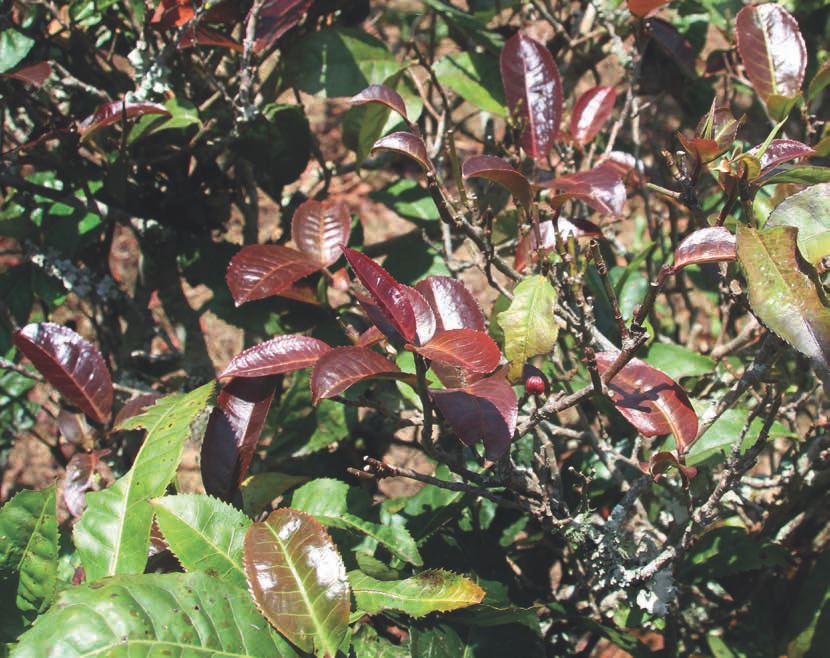
Most wild Purple Bud tea trees grow in the primeval forests of Yunnan's mountains. Early on, scientists from the Yunnan Tea Research Institute (雲南茶科所) noticed tea trees with quite purple leaves and shoots among the community of tea plants at the Nannuo Mountain (南糯山) Tea Plantation, but at the time, they didn't intentionally propagate them. According to one version of the story, in 1985, researchers from the Yunnan Academy of Agricultural Sciences Tea Research Institute (雲南省農業科學院茶業研究所) noticed a single, unique tea tree growing among 600,000 others in a largeleaf plantation in Yunnan. The buds, leaves and stems of this tree were completely purple. Starting in 1986, experts selectively bred offspring taken from this plant for several generations, thus cultivating a new, reliably occurring variety of tea tree. Because of its purple leaves, buds and stems, it was named "Purple Beauty," or "Zi Juan (紫娟)." (There are other scholars who suggest that Zi Juan was grafted by crossing a varietal from Wuyi, in Fujian, with local cultivars.)
For a long time, there wasn't a clear definition of Purple Bud tea. It wasn't until after the discovery of Purple Beauty tea that Purple Bud tea was gradually recognized for its unique qualities, and began to gain favor among tea drinkers. From around the year 2000, Purple Bud tea began to be produced as a tea in its own right throughout many parts of Yunnan. In the spring of this year, I accompanied Taiwanese tea culture expert Master Tsai Yizhe (蔡奕哲) to explore the ecology and the current circumstances of Purple Bud tea in the Lincang (臨滄) tea region. When we interviewed the local tea farmers, they divulged that Zi Ya tea is now quite well-received, and is no longer overlooked by tea merchants or passed off as "over-fermented" leaves. Far from it, as of 2008, Purple Bud tea now fetches more than twice the price of ordinary green sheng puerh tea produced in the same place.
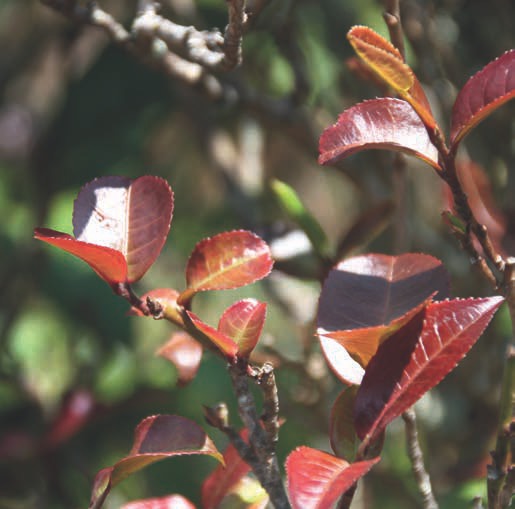
"Put simply, the main difference between Zi Ya and Zi Juan tea trees is that the ancient tea trees used for Zi Ya (Purple Bud) tea arose as a natural genetic mutation, almost as if the seasonal high temperatures and the ultraviolet rays from the strong sunshine encouraged the trees to grow purple buds, like these shown here."
Because it is produced in such small volumes, the price of Zi Ya tea is practically rising by the day. Together with the tea merchants enthusiastic promotion, this has resulted in quite a high demand for Zi Ya tea. It's common for tea drinkers who don't yet have a deep knowledge of puerh to discuss Zi Ya and Zi Juan tea as if they were the same thing. This is a point that I feel merits some special clarification.
Put simply, the main difference between Zi Ya and Zi Juan tea trees is that the ancient tea trees used for Zi Ya (Purple Bud) tea arose as a natural genetic mutation; almost as if the seasonal high temperatures and the ultraviolet rays from the strong sunshine encouraged the trees to grow purple buds, like these shown here. Zi Juan (Purple Beauty) tea, on the other hand, was cultivated through careful breeding, selecting only the chosen seedlings for grafting, and increasing the sunlight and temperature until the result was a whole plantation of trees that were entirely purple, from bud to leaf to stem. By contrast, Zi Ya (Purple Bud) tea is much scarcer - in a whole forest of ancient tea trees, there will only be a few with any purple buds, and even those trees tend to only have a few shoots that are purple, perhaps as few as three, and likely not more than twenty or so. When these shoots do appear, only the bud itself and two or three new leaves nearest the tip turn purple, so they really are very rare.
As for which tea region in Yunnan grows the most Purple Bud tea, after many enquiries, I've found it very difficult to obtain any statistics. The tea farmers don't seem to have a clear idea, and at present, there is no governing body to collect concrete numbers.
To get a comprehensive overview, I collected a wide selection of Zi Ya and Zi Juan teas from different regions to taste and compare. The dry leaves of Zi Juan are a glossy purple-black, and the tea cakes are black and almost oily in appearance; they're easy to identify from appearance alone. The tea liquor is a very appealing light purple color, but the flavor tends to be on the weaker side, with a hint of bitterness and astringency. Because the Zi Juan tea variety has only been officially grown for twenty-odd years, the relative faintness of the flavor likely has something to do with the age of the trees. At one point, there was a tea merchant who tried oxidizing Zi Juan tea leaves to make shou puerh; this tea wasn't received with much enthusiasm by buyers, however. I believe that the most important factor in a good tea is the innate characteristics of the tea leaves; while the art of processing can certainly add the icing on the cake (or "add flowers to the brocade," as we say in Chinese), it cannot change the original nature of the leaf.
As for the appearance of Zi Ya tea leaves, the buds are noticeably white, while the leaves are slightly darker in color than regular green tea and the backs of the leaves are less downy. The liquor is clear and bright, and golden yellow in color (not red or purple). The tea has a full mouthfeel and a simple, elegant, slightly sweet flavor. Zi Ya tea contains higher levels of anthocyanins (a type of plant pigment). These trees also contain more pectin than the leaves and buds of most other tea trees. If purple tea buds also contained more catechins and tea polyphenols than regular tea buds, then you'd expect the first impression when drinking Zi Ya tea to be similar to that of Zi Juan, with a noticeable bitterness and astringency. However, after numerous taste comparisons, this wasn't the case at all. The flavor was always simple and elegant, with a subtle sweetness. So, if we must make a pronouncement on the difference between Zi Ya and Zi Juan, it is this: Zi Ya is the more fragrant of the two, with a sweeter liquor. Master Tsai Yizhe, who has spent so many years researching and conserving the ecosystems of tea plantations, sees this phenomenon as a "gift from Nature."
In fact, there's really no need for us to name a favorite between the naturally occurring Zi Ya (Purple Bud) variety and the Zi Juan (Purple Beauty) tea variety that was cultivated using modern scientific techniques. Each has its own character, and any tea that is grown in the mountains, free from pesticides, herbicides, and chemical fertilizers or germination treatments, is already a wonderful choice. So, drink whichever pleases you most - the choice is yours! Tea has offered us the most wonderful bounty of variety, spanning thousands and thousands of unique cups. I hope to share some of them with all of you one day!

